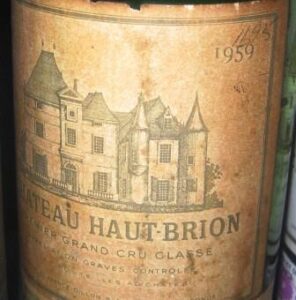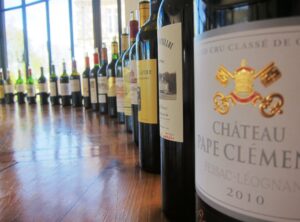Learn everything about the official 1959 Graves Classification
With the exception of Chateau Haut-Brion, the famous 1855 Bordeaux classification did not consider any other Bordeaux wine produced in what was then referred to as the Graves appellation.
To rectify that situation, the producers in the Graves appellation came up with their own classification of the Graves area. Today, we refer to the region as Pessac Leognan.
Regardless of how you chose to look at the region, for all intents and purposes, the original 1959 Graves Classification continues to have merit.
While the 1855 Classification is etched in stone, there could one day be new additions to the Graves Classification. It will be difficult.
But I am told, if a chateau demonstrates they produce wine that is better than most of the members of the classified growths from Graves/Pessac Leognan, they have a good chance of being admitted, providing of course that the wine sells for at least as much as the other already classified Pessac Leognan estates. Bordeaux can be complicated.
Red Wine Classification
Haut-Brion
Bouscaut
Haut Bailly
Carbonnieux
Chevalier
de Fieuzal
Olivier
Malartic Lagraviere
La Tour Martillac
Smith Haut Lafitte
La Mission Haut Brion
Pape Clement
La Tour Haut Brion
White Wine Classification
Haut-Brion
Bouscaut
Carbonnieux
Chevalier
Couhins
Couhins Lurton
Laville Haut Brion
Olivier
Malartic Lagraviere
La Tour Martillac
The Graves classification took place almost 100 years after the official 1855 Classification of Bordeaux wine. The Graves official classification emulated that of the Medoc Classification in numerous ways.
They used essentially the same criteria to obtain their results for their own classification. One of the key determining factors they took into consideration was the selling price over a long period of time as well as considerations for the the terroir and soils in Pessac Leognan..

The genesis for the 1959 Graves Classification came from the Graves Wine Syndicate. A special committee consisting of various wine merchants and brokers was were brought together by the I.N.A.O, the Institute National des Appellations d’Origine Controller.
The members of the panel were asked to study the market price of the wine over a long period of time.
In total, 22 different wines from 16 chateaux were included in the classification of Graves. Of those wines, 3 chateaux were classified for only white wines, 5 chateaux were classified for only red wines and the remaining chateaux were classified for both their red and white wines.
On 7th August 1953, an unofficial list was created. It took a few years, but the classification of Graves wine was finalized on 16th February 1959.
This list correctly had Chateau Haut-Brion with the same classification as they earned in the 1855 Bordeaux classification, Grand Cru Classé, which appears on the label.
The other chateaux that belong to the 1959 Graves Classification were entitled to add the term, Cru Classé on their labels for all releases on a going forward basis.
The classified estates consume more than 500 hectares of the Pessac Leognan appellation. When you add it up, that means they represent 40% of the entire Pessac Leognan appellation!
The listings for the 1959 Graves Classification are divided between red wines and white Bordeaux wines, which means that some chateaux are mentioned twice, once for red wines, and again for the production of the white wine.
When looking at the classification of the Graves, it’s important to note that only 6 Chateau were classified for both red and white wine. The reason that the number is so small was not because of the quality of wine being produced.
It was due to the fact that some estates famous for making white bordeaux wine today were not producing white wine at the time of the graves classification.
Obviously, when looking at the original classification of the white wines, one name is missing, Haut Brion. Chateau Haut Brion declined to participate in the classification at the time.
Their logic was, their production was so small at only a few hundred cases, it would not matter. As Chateau Haut Brion Blanc is perhaps the world’s most expensive white wines, (based on the price being asked from the winery, and not in the aftermarket), clearly, they were right.

